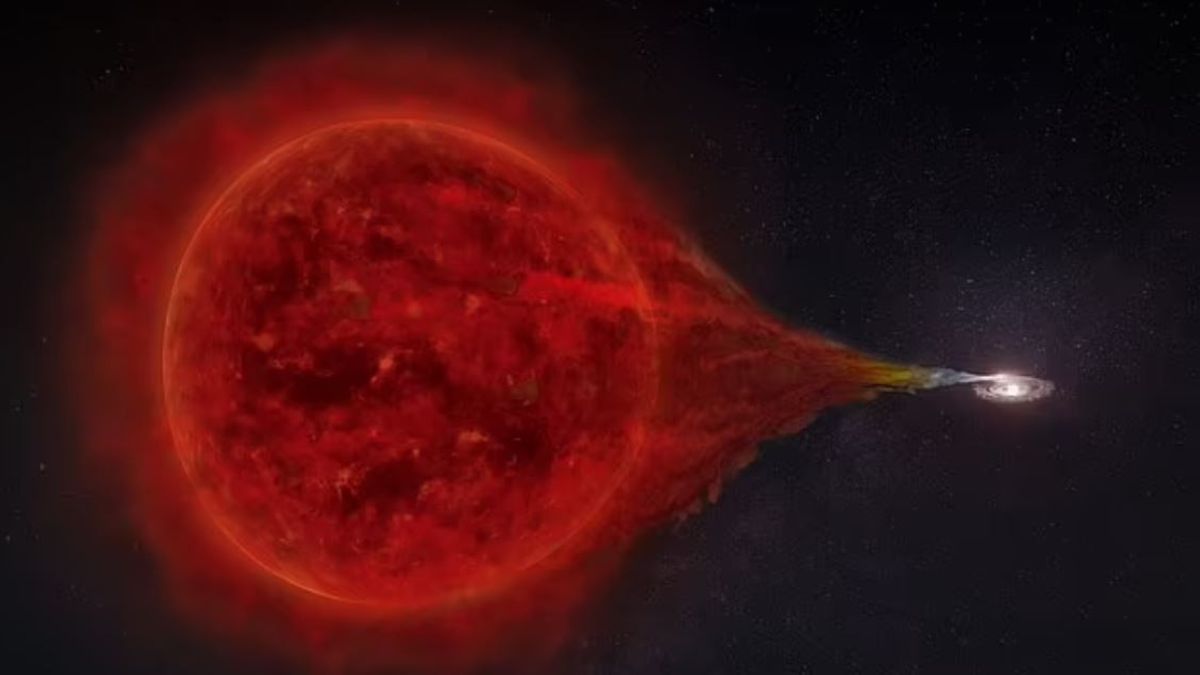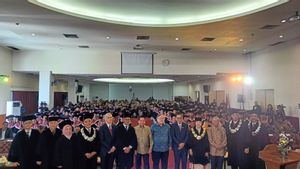JAKARTA - A binary star system, 5.000 light-years from Earth, and exploding in a dramatic nova every 15 years, has been spotted by a pair of MAGIC telescopes.
RS Ophiuchi (RS Oph) is in the constellation Serpent Bearer and is made up of a white dwarf and a red giant that is on top, burning up in a supernova.
Astronomers from the Max Planck Institute in Germany studied binary pairs using the MAGIC telescope, the Cherenkov system of two Imaging Atmospheric telescopes at the Roque de los Muchachos Observatory in La Palma, Canary Islands.
Every 15 years a dramatic explosion comes from this binary pair, as the red giant sheds its material, pulling to the surface of the White Dwarf, a dead star.
A nova cradle is a system in which two very different stars live in a parasitic relationship, usually a smaller and larger star.
In this case, the white dwarf, which is a small star, burned out and dense, in which a teaspoon of matter weighing 1 tonne, orbits a red giant, an old star that will soon burn up.
The dying giant star feeds the white dwarf with matter that sheds its outermost layer of hydrogen as gas flows into a nearby white dwarf. This flow of matter continued, until the white dwarf devoured itself excessively and exploded.
The temperature and pressure in the shell of the newly acquired star became too great and was thrown off in a giant thermonuclear explosion. The dwarf star remains intact and the cycle begins again, until the spectacle repeats itself.
There has been speculation that such an explosion involved high energy, but the exact details are unclear, especially for this particular nova.
Both MAGIC telescopes recorded gamma rays with values of 250 gigaelectronvolts (GeV), among the highest energies ever measured in a nova. In comparison, radiation is a hundred billion times more energetic than visible light.
The team was able to make observations, gamma rays, following early warnings from other instruments measuring at different wavelengths.
The spectacular eruption of RS Ophiuchi showed that the fast response of the MAGIC telescope really paid off.
"They take no more than 30 seconds to move to a new target," said David Green, a scientist at the Max Planck Institute for Physics and one of the authors of the paper, cited from Daily Mail.
After the explosion, several shock fronts spread through the stellar winds of the Red Giant and the interstellar medium surrounding the binary system.
These shock waves work like giant power plants where particles are accelerated to near the speed of light.
SEE ALSO:
A combination of measurements made by Earth-based telescopes, showed the gamma rays came from energetic protons, the nuclei of hydrogen atoms. "This also makes nova explosions a source of cosmic rays," said Green.
"However, they tend to play the role of local heroes - meaning only to contribute to cosmic rays in the immediate environment," he added.'
The big cast of cosmic rays are supernova remnants. The shock front created by a stellar explosion is much more violent than the nova itself.
To fully understand the complex interactions of violent events with the interstellar medium in the Milky Way, further observations such as those of the Ophiuchi Hospital will be needed.
The team says the MAGIC Collaboration will continue to search for 'restless' objects in our galaxy and beyond. The findings have been published in the journal Nature Astronomy.
The English, Chinese, Japanese, Arabic, and French versions are automatically generated by the AI. So there may still be inaccuracies in translating, please always see Indonesian as our main language. (system supported by DigitalSiber.id)















